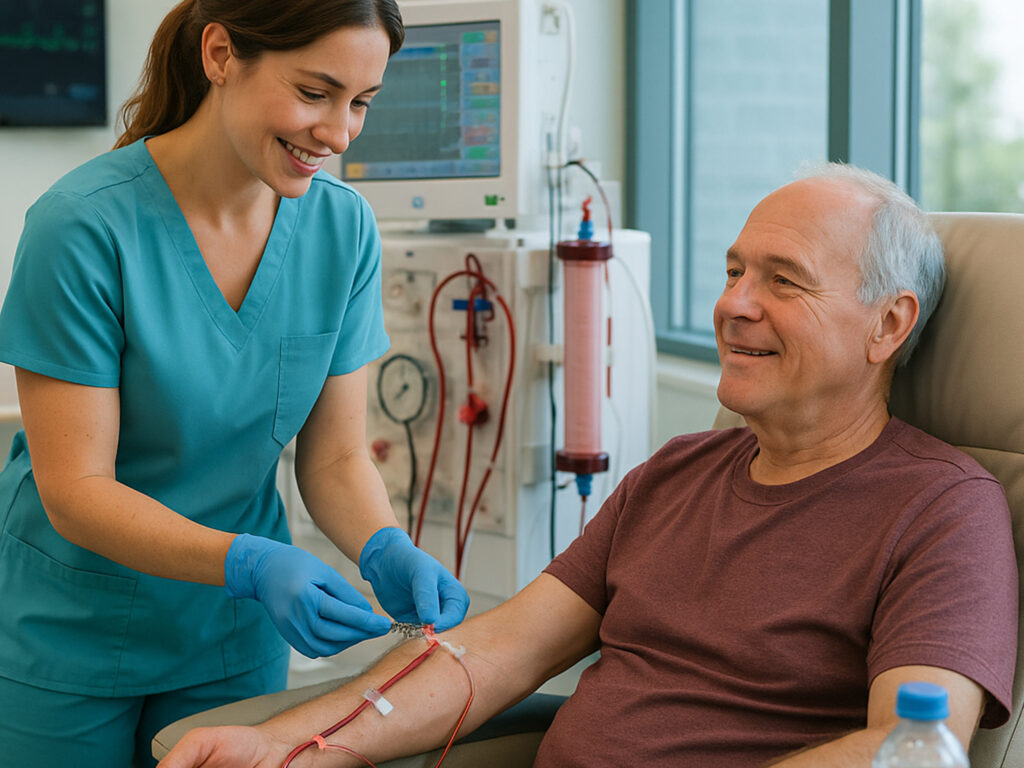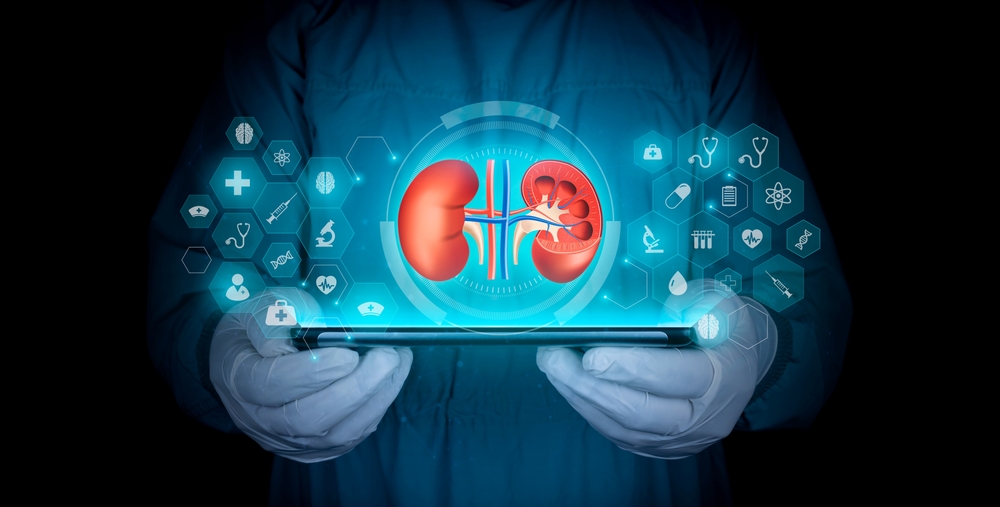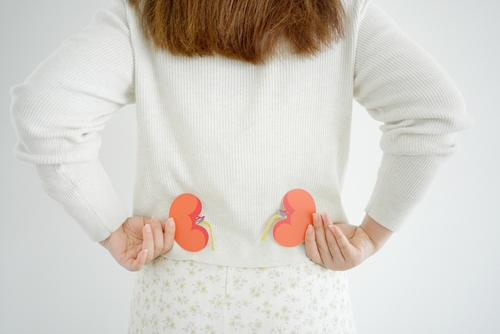Dialysis is a life-saving treatment for people whose kidneys are no longer able to filter waste from the blood. The kidneys play a crucial role in maintaining the body’s balance by removing toxins, regulating fluid levels, and controlling blood pressure. When the kidneys fail or function poorly, dialysis becomes necessary to perform some of these essential functions artificially. If you or a loved one is facing kidney failure and considering dialysis, it’s important to understand the different types of dialysis, the procedures involved, and what you can expect during the treatment process.
What is Dialysis?
Dialysis is a medical treatment that replaces the functions of the kidneys when they can no longer perform adequately. It is typically used for individuals with end-stage kidney disease (ESKD), which is the final stage of chronic kidney disease. The treatment helps remove waste, extra fluid, and toxins from the body, a process that the kidneys would normally perform.
Types of Dialysis
There are two primary types of dialysis: Hemodialysis and Peritoneal Dialysis. Each has different procedures and benefits, depending on a patient’s individual needs and lifestyle.
1. Hemodialysis
Hemodialysis is the most common form of dialysis. It involves the use of a machine and a dialyzer (artificial kidney) to filter waste, extra fluid, and toxins from the blood. The blood is removed from the body, cleaned, and then returned to the body through a dialysis machine.
To begin hemodialysis, a vascular access point is created, usually by surgically inserting a fistula, graft, or catheter into a vein, most commonly in the arm. This allows blood to flow in and out of the body during the procedure.
The blood flows through the dialyzer, where it’s cleaned and filtered. The process typically lasts around 3-5 hours and is done three times a week, although this can vary based on the patient’s needs.
2. Peritoneal Dialysis
Peritoneal dialysis uses the lining of the abdominal cavity (called the peritoneum) as a natural filter to remove waste and excess fluid from the blood. It involves the infusion of a dialysis solution into the abdominal cavity, which absorbs waste and then is drained out.
A catheter is surgically placed into the abdomen for the infusion and drainage of the dialysis solution.
Once the catheter is in place, a special solution (dialysate) is introduced into the abdomen. The solution absorbs waste and extra fluid, which is then drained out after a period of time.
Types of Peritoneal Dialysis:
- Continuous Ambulatory Peritoneal Dialysis (CAPD): Performed manually by the patient, typically 4 times a day.
- Automated Peritoneal Dialysis (APD): Done at night using a machine that automatically cycles the dialysis solution.
Some people may experience infections (peritonitis), weight gain due to the glucose in the dialysis fluid, or discomfort from the catheter.
Choosing Between Hemodialysis and Peritoneal Dialysis
The decision between hemodialysis and peritoneal dialysis depends on several factors, including:
- Hemodialysis may be recommended for patients with poor kidney function or those who don’t have suitable veins for peritoneal dialysis.
- Peritoneal dialysis offers more flexibility, as it can be done at home and often doesn’t require frequent clinic visits.
- Some patients may prefer one process over the other based on comfort, convenience, or ability to manage the treatments themselves.
What to Expect During Dialysis Treatment
Whether you’re starting hemodialysis or peritoneal dialysis, there are some general expectations for the experience.
1. Time Commitment
Hemodialysis treatments typically last about 3-5 hours per session and are required about three times a week. This means patients will need to dedicate a significant amount of time to the process, including travel to and from the dialysis center.
While Peritoneal Dialysis can be done at home, it requires multiple exchanges throughout the day or at night if using automated machines. Each exchange generally takes about 30 minutes to an hour.
2. Hospital or Home-Based Care
Most patients receive hemodialysis at a clinic or hospital under the supervision of medical staff.
Peritoneal Dialysis can be performed at home after receiving proper training, making it a more flexible option for many people. However, some patients may still need assistance or prefer receiving treatment in a clinic.
3. Monitoring and Adjustments
Your healthcare team will monitor your dialysis treatments closely. They’ll check your blood pressure, blood tests, and other health indicators to make adjustments to the dialysis schedule, medication, and fluid balance.
4. Mental and Emotional Well-Being
Living with kidney disease and undergoing dialysis can be mentally and emotionally taxing. It’s common to feel fatigued, anxious, or depressed. Having a support system, such as family, friends, or a support group, can be vital.
Complications to Be Aware Of
While dialysis is generally effective at improving quality of life, there are potential complications, such as:
- Infections: Hemodialysis and peritoneal dialysis both carry a risk of infection, especially with the access points (catheters or fistulas).
- Fluid Imbalance: Dialysis helps regulate fluid, but it’s still essential for patients to monitor their fluid intake. Overconsumption can lead to swelling, shortness of breath, or other issues.
- Electrolyte Imbalance: Dialysis helps control blood levels of potassium, calcium, and phosphorus. Abnormal levels can lead to serious health problems.
What Happens After Dialysis?
Dialysis is typically a long-term commitment, and some patients may eventually require a kidney transplant if their kidneys fail entirely. A kidney transplant involves receiving a donor kidney, either from a living or deceased donor. It’s a complex procedure that requires careful consideration and evaluation, but it offers a chance to return to a more typical lifestyle.
Final Thoughts
Dialysis is an essential treatment for individuals with kidney failure, allowing them to manage their health and live a more comfortable life. Whether you’re undergoing hemodialysis or peritoneal dialysis, understanding the process, what to expect, and potential risks is crucial to managing your health and making informed decisions about your care. Always work closely with your healthcare team to find the best treatment plan tailored to your unique needs and circumstances.
Remember, while dialysis doesn’t cure kidney disease, it plays a pivotal role in sustaining life and improving the quality of life for many people facing kidney failure.
Stay informed and take control of your kidney health!




